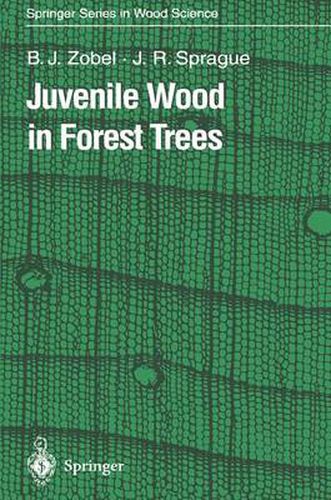Readings Newsletter
Become a Readings Member to make your shopping experience even easier.
Sign in or sign up for free!
You’re not far away from qualifying for FREE standard shipping within Australia
You’ve qualified for FREE standard shipping within Australia
The cart is loading…






This title is printed to order. This book may have been self-published. If so, we cannot guarantee the quality of the content. In the main most books will have gone through the editing process however some may not. We therefore suggest that you be aware of this before ordering this book. If in doubt check either the author or publisher’s details as we are unable to accept any returns unless they are faulty. Please contact us if you have any questions.
The trend in forestry is toward shorter rotations and more complete utiliza tion of trees. The reasons are: (1) financial pressures to obtain rapid returns on the forestry investment made possible by an earlier harvest; (2) enforced harvest of young plantations to maintain a continuing supply of cellulose for mills where wood shortages are experienced; (3) thinning young plantations, both because they were planted too densely initially and because thinning is done where long rotation quality trees are the forestry goal; (4) more intensive utilization is being done using tops and small diameter trees; and (5) there is interest in using young (juvenile) wood for special products because of its unique characteristics and the development of new technologies. The largest present-day source of conifer juvenile wood is from thinnings of plantations where millions of hectares of pine were planted too densely. Because of the better growth rate resulting from improved silviculture and good genetic stock, plantations will need to be thinned heavily. As a result of this trend, young wood makes up an increasingly larger proportion of the total conifer wood supply each year. Large amounts of juvenile wood from hard woods are also currently available, especially in the tropics and subtropics, because of the fast growth rate of the species used, which results in shorter rotations and ess~ntially all juvenile wood.
$9.00 standard shipping within Australia
FREE standard shipping within Australia for orders over $100.00
Express & International shipping calculated at checkout
This title is printed to order. This book may have been self-published. If so, we cannot guarantee the quality of the content. In the main most books will have gone through the editing process however some may not. We therefore suggest that you be aware of this before ordering this book. If in doubt check either the author or publisher’s details as we are unable to accept any returns unless they are faulty. Please contact us if you have any questions.
The trend in forestry is toward shorter rotations and more complete utiliza tion of trees. The reasons are: (1) financial pressures to obtain rapid returns on the forestry investment made possible by an earlier harvest; (2) enforced harvest of young plantations to maintain a continuing supply of cellulose for mills where wood shortages are experienced; (3) thinning young plantations, both because they were planted too densely initially and because thinning is done where long rotation quality trees are the forestry goal; (4) more intensive utilization is being done using tops and small diameter trees; and (5) there is interest in using young (juvenile) wood for special products because of its unique characteristics and the development of new technologies. The largest present-day source of conifer juvenile wood is from thinnings of plantations where millions of hectares of pine were planted too densely. Because of the better growth rate resulting from improved silviculture and good genetic stock, plantations will need to be thinned heavily. As a result of this trend, young wood makes up an increasingly larger proportion of the total conifer wood supply each year. Large amounts of juvenile wood from hard woods are also currently available, especially in the tropics and subtropics, because of the fast growth rate of the species used, which results in shorter rotations and ess~ntially all juvenile wood.